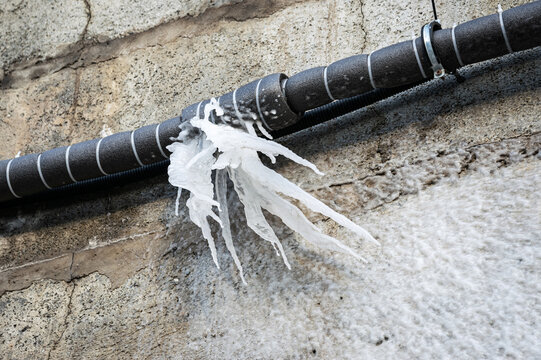Are you trying to locate help around Preventing and dealing with frozen pipes?

Winter can wreak havoc on your plumbing, especially by freezing pipelines. Here's exactly how to prevent it from happening and what to do if it does.
Introduction
As temperature levels decline, the threat of icy pipelines increases, potentially resulting in pricey fixings and water damages. Recognizing just how to stop icy pipelines is critical for home owners in cool climates.
Recognizing Frozen Pipelines
What causes pipelines to freeze?
Pipes ice up when subjected to temperature levels below 32 ° F (0 ° C) for expanded durations. As water inside the pipes ices up, it broadens, taxing the pipe walls and possibly causing them to break.
Risks and problems
Frozen pipes can result in water supply disruptions, building damages, and expensive repair work. Ruptured pipes can flooding homes and cause considerable structural damages.
Signs of Frozen Water Lines
Identifying frozen pipes early can stop them from bursting.
Exactly how to recognize icy pipelines
Look for decreased water flow from taps, uncommon odors or noises from pipes, and visible frost on subjected pipelines.
Prevention Tips
Insulating susceptible pipes
Wrap pipes in insulation sleeves or utilize warmth tape to protect them from freezing temperatures. Concentrate on pipelines in unheated or external areas of the home.
Home heating strategies
Maintain indoor areas appropriately heated, specifically locations with pipes. Open cabinet doors to enable warm air to distribute around pipes under sinks.
Securing Outdoor Pipes
Garden hoses and outside taps
Detach and drain pipes garden pipes before winter. Set up frost-proof faucets or cover outdoor faucets with shielded caps.
What to Do If Your Pipes Freeze
Immediate activities to take
If you suspect frozen pipelines, maintain faucets open up to alleviate stress as the ice thaws. Make use of a hairdryer or towels soaked in hot water to thaw pipes gradually.
Long-Term Solutions
Architectural changes
Think about rerouting pipelines far from exterior walls or unheated areas. Include extra insulation to attic rooms, cellars, and crawl spaces.
Updating insulation
Buy high-quality insulation for pipelines, attic rooms, and walls. Appropriate insulation aids preserve constant temperatures and minimizes the risk of icy pipelines.
Verdict
Stopping icy pipelines needs positive actions and quick feedbacks. By comprehending the causes, indicators, and safety nets, home owners can safeguard their plumbing during winter.
5 Ways to Prevent Frozen Pipes
Drain Outdoor Faucets and Disconnect Hoses
First, close the shut-off valve that controls the flow of water in the pipe to your outdoor faucet. Then, head outside to disconnect and drain your hose and open the outdoor faucet to allow the water to completely drain out of the line. Turn off the faucet when done. Finally, head back to the shut-off valve and drain the remaining water inside the pipe into a bucket or container. Additionally, if you have a home irrigation system, you should consider hiring an expert to clear the system of water each year.
Insulate Pipes
One of the best and most cost-effective methods for preventing frozen water pipes is to wrap your pipes with insulation. This is especially important for areas in your home that aren’t exposed to heat, such as an attic. We suggest using foam sleeves, which can typically be found at your local hardware store.
Keep Heat Running at 65
Your pipes are located inside your walls, and the temperature there is much colder than the rest of the house. To prevent your pipes from freezing, The Insurance Information Institute suggests that you keep your home heated to at least 65 degrees, even when traveling. You may want to invest in smart devices that can keep an eye on the temperature in your home while you’re away.
Leave Water Dripping
Moving water — even a small trickle — can prevent ice from forming inside your pipes. When freezing temps are imminent, start a drip of water from all faucets that serve exposed pipes. Leaving a few faucets running will also help relieve pressure inside the pipes and help prevent a rupture if the water inside freezes.
Open Cupboard Doors
Warm your kitchen and bathroom pipes by opening cupboards and vanities. You should also leave your interior doors ajar to help warm air circulate evenly throughout your home.

I discovered that article on 6 Ways to Prevent Frozen Pipes while doing a search on the internet. In case you enjoyed reading our page plz be sure to pass it around. I cherish reading our article about 6 Ways to Prevent Frozen Pipes.
Book Maintenance